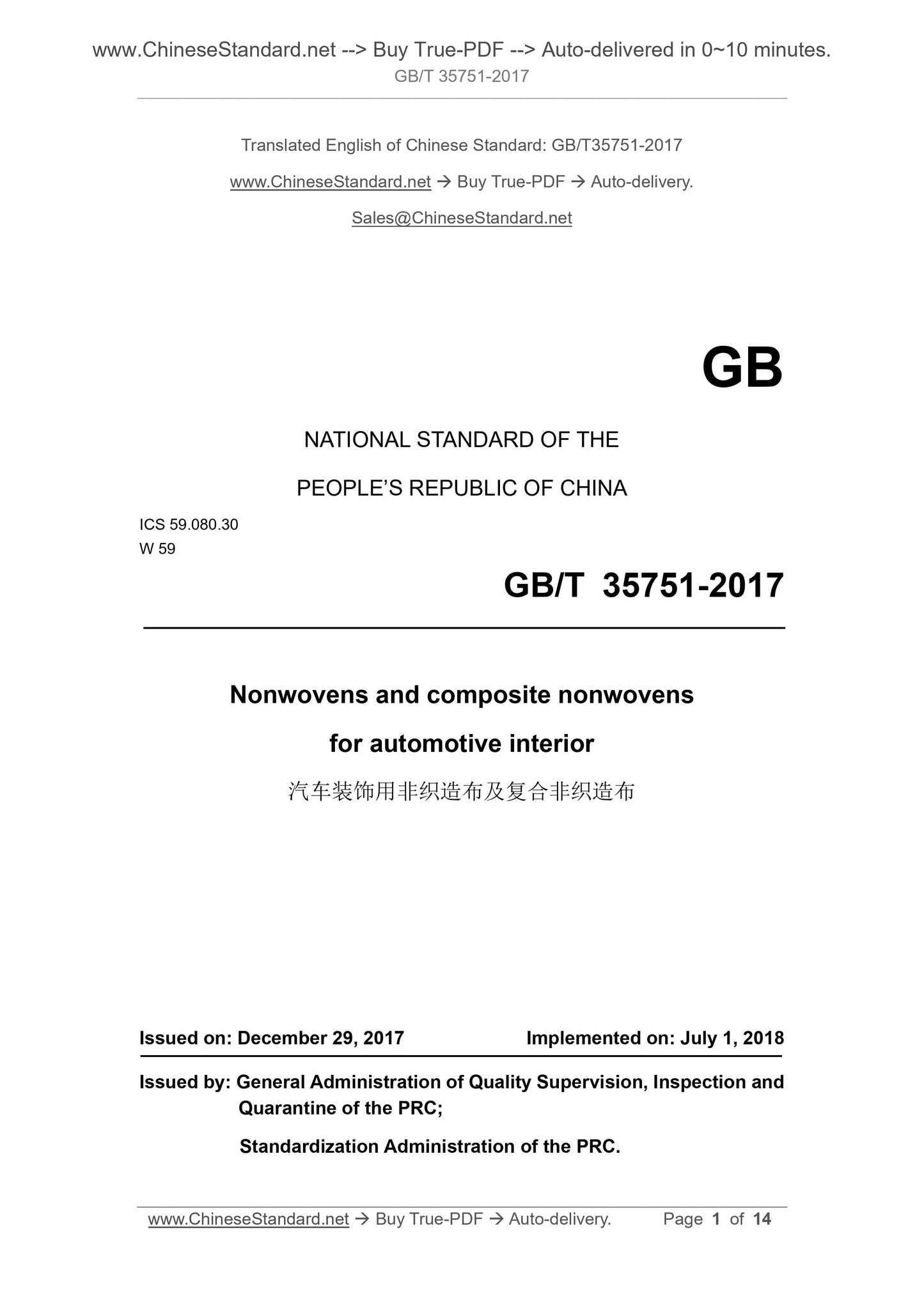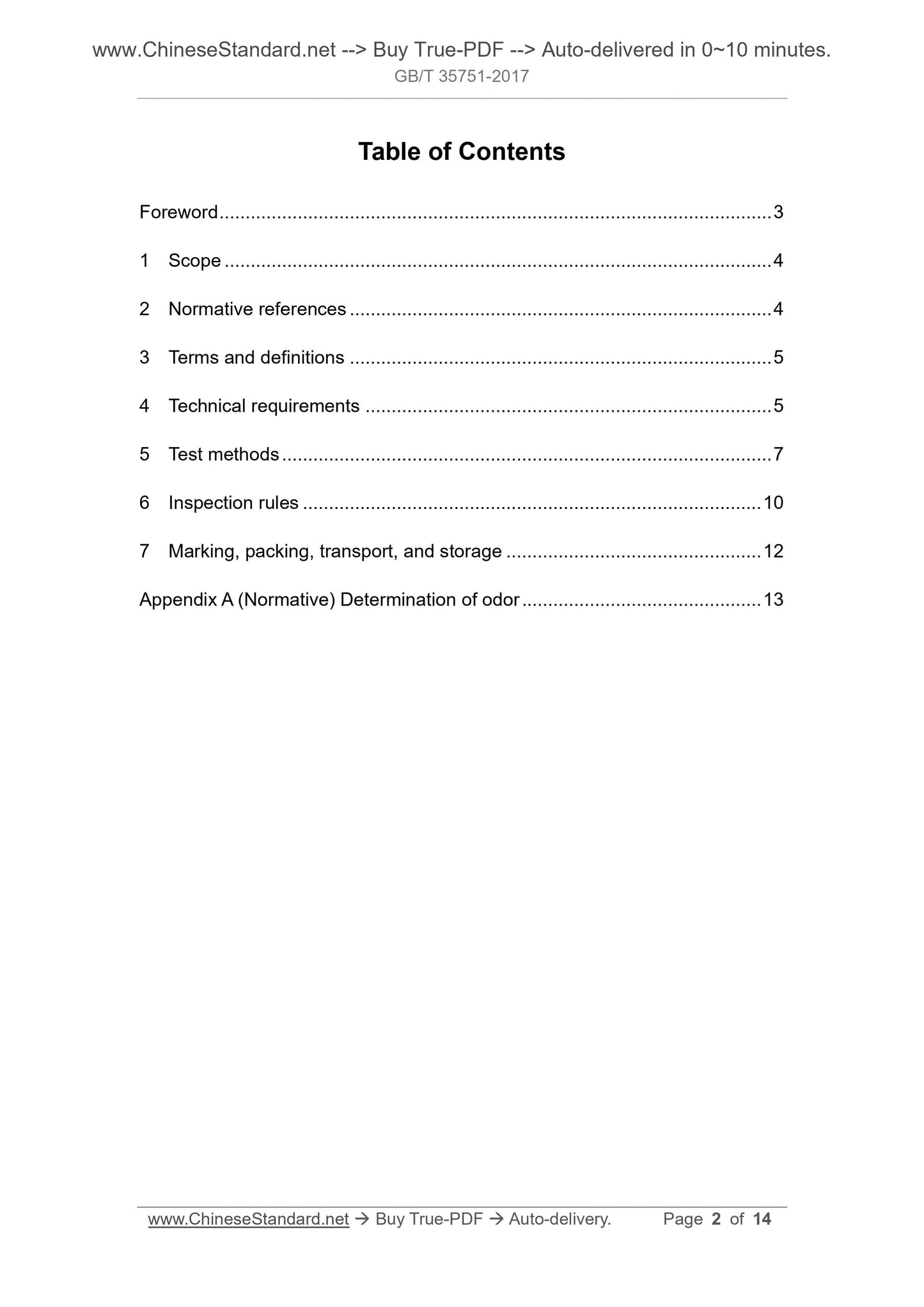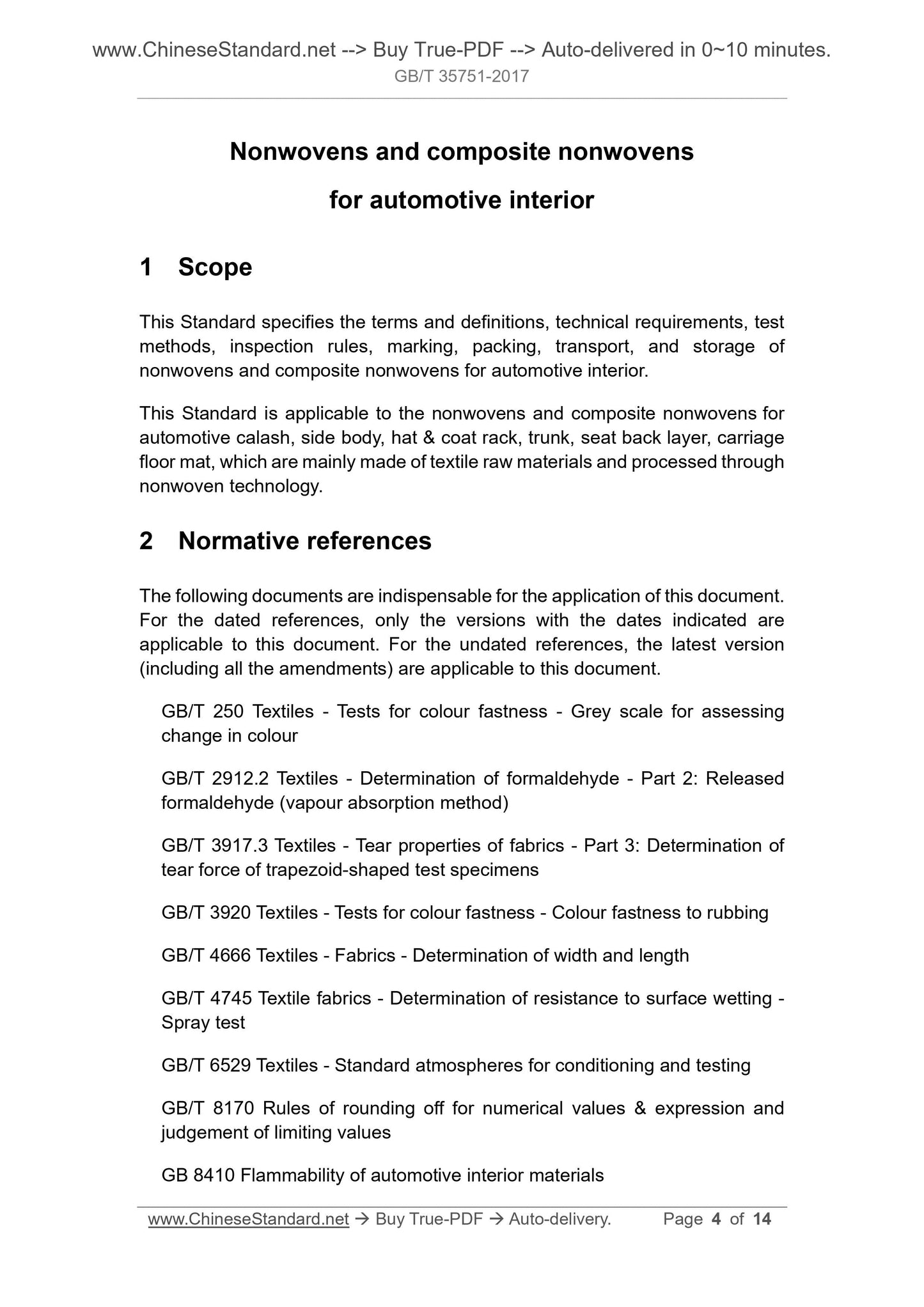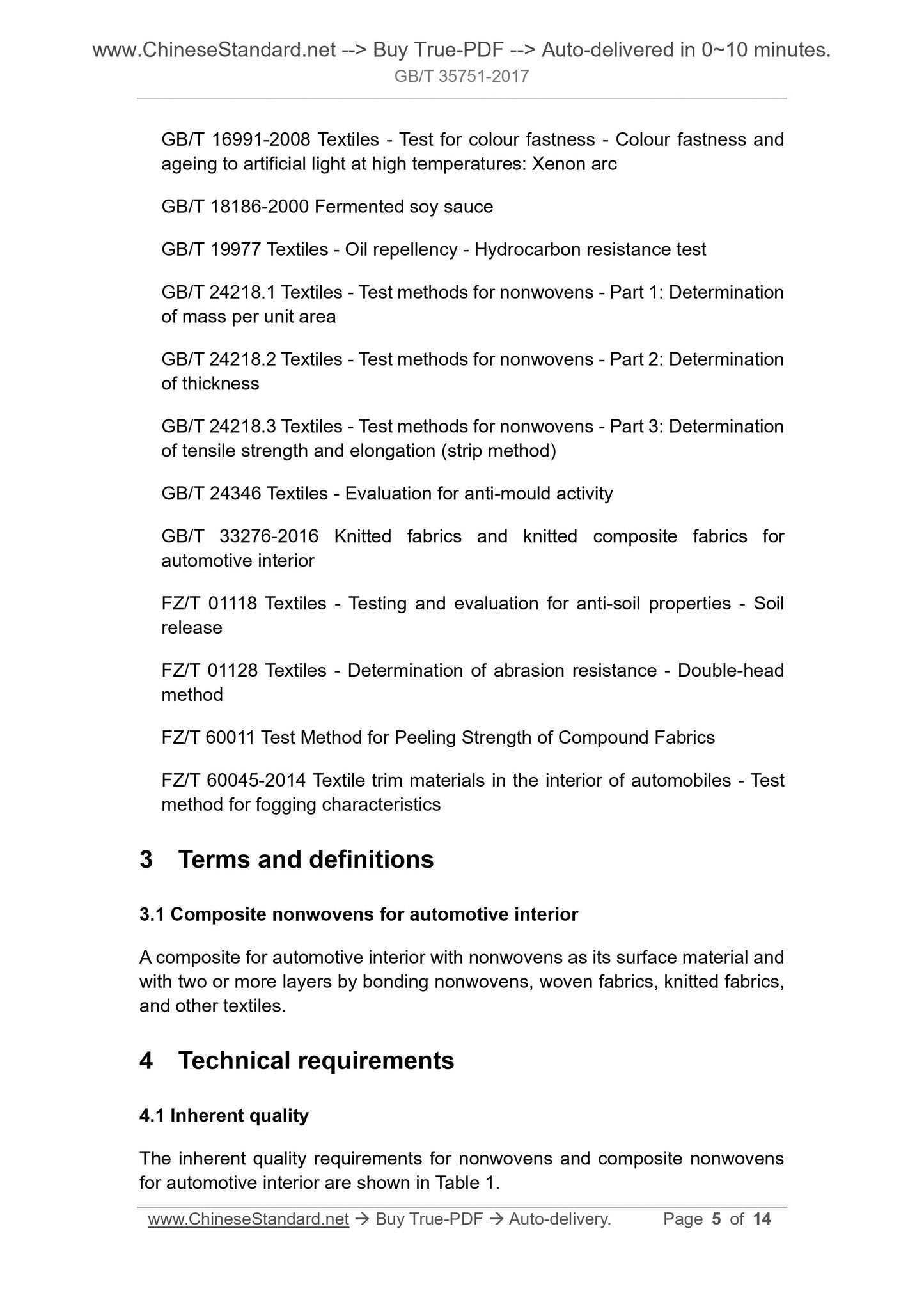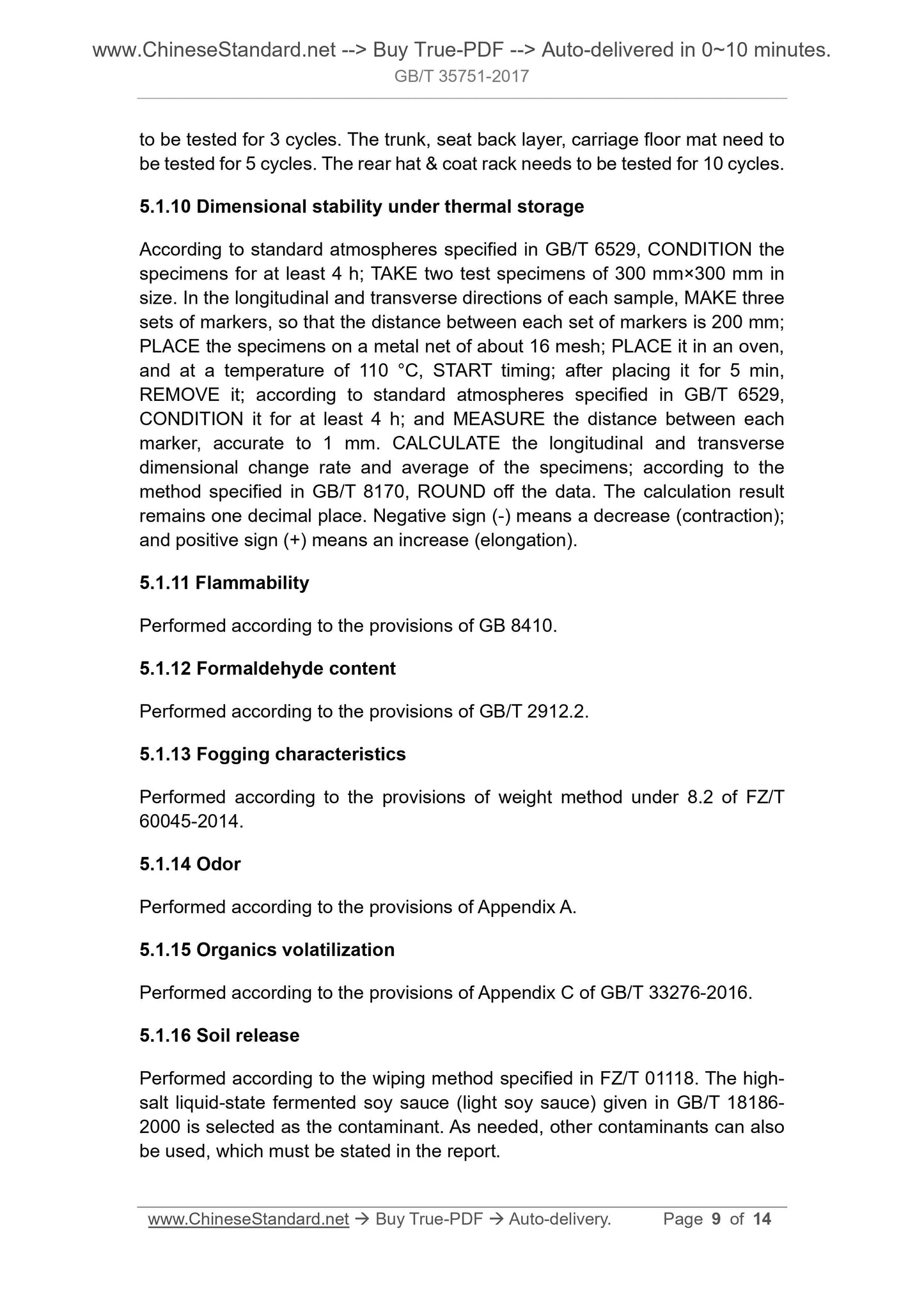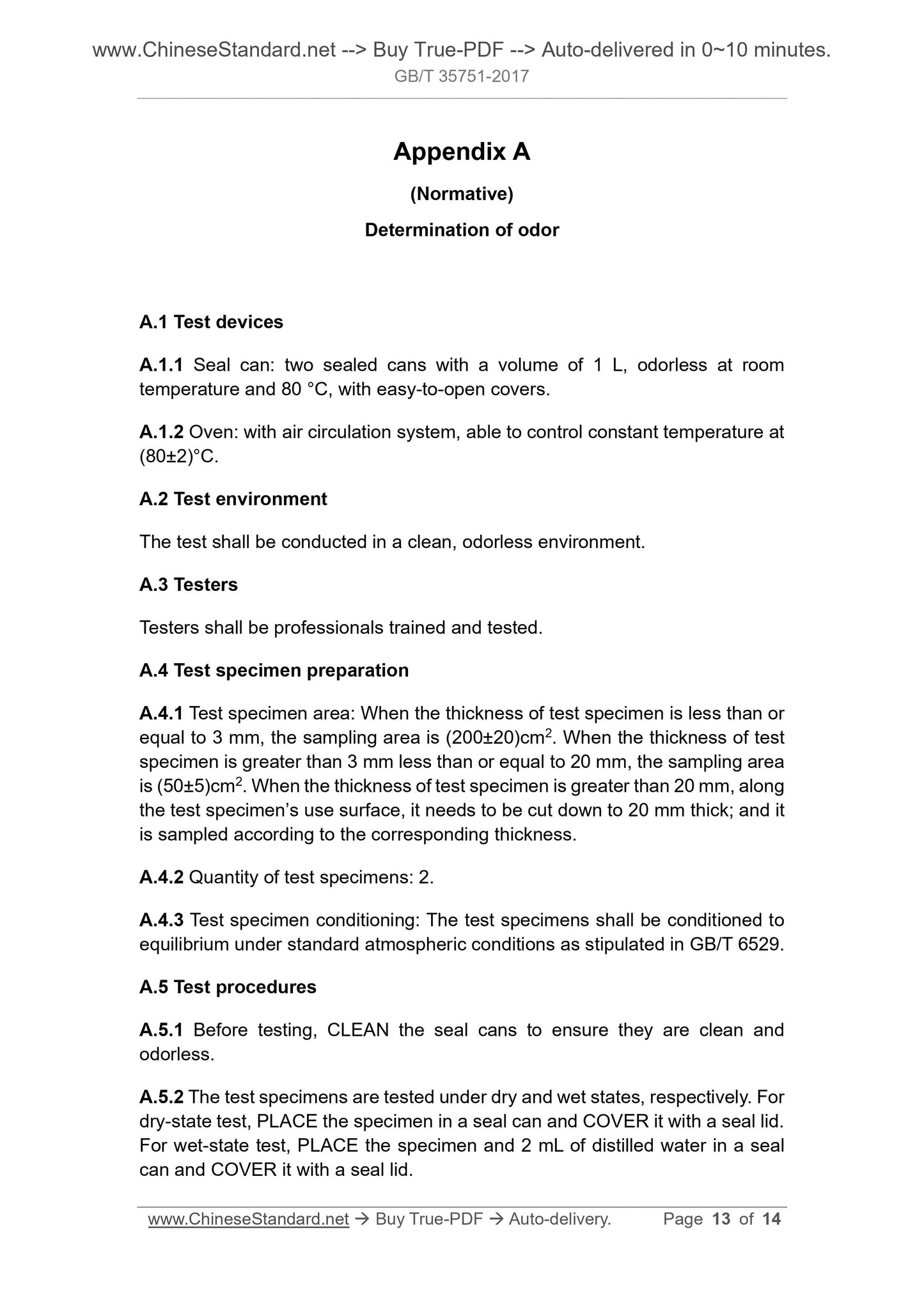1
/
of
6
www.ChineseStandard.us -- Field Test Asia Pte. Ltd.
GB/T 35751-2017 English PDF (GB/T35751-2017)
GB/T 35751-2017 English PDF (GB/T35751-2017)
Regular price
$150.00
Regular price
Sale price
$150.00
Unit price
/
per
Shipping calculated at checkout.
Couldn't load pickup availability
GB/T 35751-2017: Nonwovens and composite nonwovens for automotive interior
Delivery: 9 seconds. Download (and Email) true-PDF + Invoice.Get Quotation: Click GB/T 35751-2017 (Self-service in 1-minute)
Newer / historical versions: GB/T 35751-2017
Preview True-PDF
Scope
This Standard specifies the terms and definitions, technical requirements, testmethods, inspection rules, marking, packing, transport, and storage of
nonwovens and composite nonwovens for automotive interior.
This Standard is applicable to the nonwovens and composite nonwovens for
automotive calash, side body, hat and coat rack, trunk, seat back layer, carriage
floor mat, which are mainly made of textile raw materials and processed through
nonwoven technology.
Basic Data
| Standard ID | GB/T 35751-2017 (GB/T35751-2017) |
| Description (Translated English) | Nonwovens and composite nonwovens for automotive interior |
| Sector / Industry | National Standard (Recommended) |
| Classification of Chinese Standard | W59 |
| Classification of International Standard | 59.080.30 |
| Word Count Estimation | 14,177 |
| Date of Issue | 2017-12-29 |
| Date of Implementation | 2018-07-01 |
| Regulation (derived from) | National Standards Bulletin 2017 No. 32 |
| Issuing agency(ies) | General Administration of Quality Supervision, Inspection and Quarantine of the People's Republic of China, Standardization Administration of the People's Republic of China |
Share
